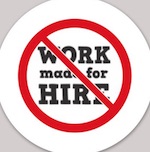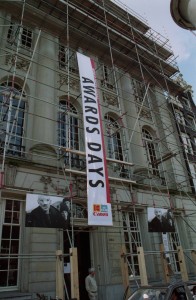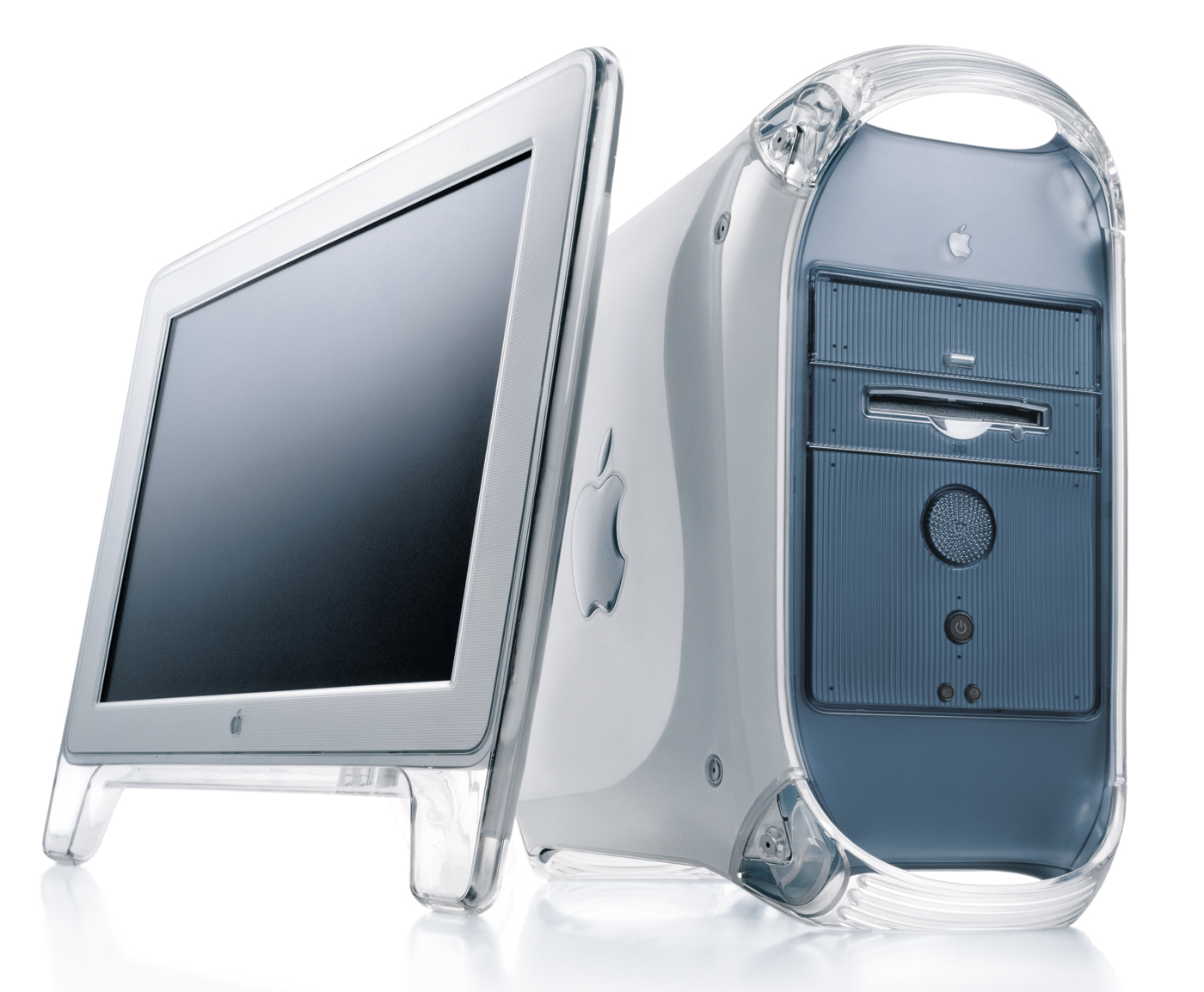 [In February of 2000 I received an unexpected invitation to write and deliver the keynote address to the annual World Press Photo Awards Days upcoming that April in Amsterdam.
[In February of 2000 I received an unexpected invitation to write and deliver the keynote address to the annual World Press Photo Awards Days upcoming that April in Amsterdam.
Though I don’t work professionally in any capacity within the disciplines of press photography and photojournalism, I thought that, by weaving together from my outsider’s perspective a number of relevant issues I do address, I might generate something provocative and engaging for the WPP audience. So I accepted the commission and set to work.
Looking back at any prophecy 20 years on has a humbling effect. Technologies we all considered cutting-edge at the time have become historical artifacts, quickly slipping into obsolescence. Tools and working methods I couldn’t anticipate shifted trajectories. Economic forces revised many assumptions.
So consider this a time capsule, as well as a period piece. Still, I hope that at least is makes for interesting reading, as you discover where I missed the mark and where I scored a bull’s-eye.
Part 2 appears below. Click here for Part 1. and here for the concluding Part 3. You can download a PDF file of the complete text here. — A.D.C.]
•
2020 Vision:
Photojournalism’s Next Two Decades (continued)
… What I’d like to do now is provide you with a model for the working life of the maker of informationally oriented imagery over the next two decades. For that purpose, allow me to reinvent you — yes, you, no matter what age you are or what job you have — as a young photojournalist, recently finished with your education and apprenticeship, just now embarked on your professional life, contemplating your future on next New Year’s Day. I’m basing this projection entirely either on existing situations and technologies or on others that are imminent and already in the making. So this is a conservative sketch; I wouldn’t be surprised if it seems archaic in 2020, the outer limit of this fantasy.
•
As a young 21st-century maker of informationally oriented imagery, you’re familiar with and knowledgeable about both print media and digital media. You can use analog cameras, perhaps even prefer them for some tasks, but increasingly your clients and your vehicles prefer digital systems. Therefore, much of your activity is digital from start to finish; but you’re expert at converting digital files to analog forms, like ink-jet prints and magazine pages, and also about going in the other direction — taking analog images and digitizing them.
![]() In school, you studied photojournalism and documentary photography in the context of a curriculum in “time-based arts.” This means that you worked with computers as necessary extensions of your cameras. You learned web design, CD-ROM production, digital audio and video editing, even page layout, along with photography. You’re experienced with computer programs like Director, Dreamweaver, PageMaker, PhotoShop, and others. Because you studied ways of multipurposing your output — for the printed page, for the web, for CD-ROM, for other media — you think and generate material differently than some of the twentieth-century dinosaurs still kicking around, people exclusively locked into making pictures for reproduction in ink. You produce both still and kinetic imagery, with and without sound components, with and without accompanying texts, according to the project or assignment on which you’re working.[1]
In school, you studied photojournalism and documentary photography in the context of a curriculum in “time-based arts.” This means that you worked with computers as necessary extensions of your cameras. You learned web design, CD-ROM production, digital audio and video editing, even page layout, along with photography. You’re experienced with computer programs like Director, Dreamweaver, PageMaker, PhotoShop, and others. Because you studied ways of multipurposing your output — for the printed page, for the web, for CD-ROM, for other media — you think and generate material differently than some of the twentieth-century dinosaurs still kicking around, people exclusively locked into making pictures for reproduction in ink. You produce both still and kinetic imagery, with and without sound components, with and without accompanying texts, according to the project or assignment on which you’re working.[1]
You have four workplaces. Two of them are in your apartment — your darkroom (you still like to sit in the blackness with the water running sometimes) and your computer station, a Mac G4 loaded with software and a slew of peripherals. The third is your website. The fourth is the field — wherever your projects and assignments take you. You remember reading somewhere that the Hungarian emigré photographer Marion Palfi once said, “My studio is the world,” and you feel that way yourself; in fact, you keep that quote tacked to your darkroom door and taped to the edge of your monitor.
In the field, you carry several analog cameras and several digital ones, including a still/video camera. You also carry a small, high-end, broadcast-quality digital audio recorder. You’re adept at using them all. More and more of your clients want your material transmitted as digital files; with your digicams and audio recorder hooked up to your PowerBook laptop and your cell phone, you’re able to oblige, and happy to do so.
They appreciate the speed and efficiency with which you fulfill their assignments. You’re delighted with the in-camera and on-laptop editing and captioning functions of the digital cameras and digital-photography programs you’re using, since they empower you, as a photojournalist, to take control of the raw material you produce while you’re still in the field, and let you decide what the picture editors will (and won’t) get to choose from, and what textual information should accompany it. The one thing you regret is that you’ve lost the classic excuse you still hear from your gray-haired colleagues: the one about how the picture editor chose the wrong picture. You don’t send back any “wrong pictures,” only the ones you think tell the story, cropped and captioned to fit your own sense of the situation you’re covering. (Secretly, you think a lot of your colleagues hang on to those analog cameras and films because that self-serving alibi comes bundled with them.)
Among the programs with which your laptop and G4 are loaded is one that automatically stamps your original digital-image files so that even the alteration of a single pixel sets off a signal. You save those files in a separate folder. That’s as close as you can get with your digicams to the authentication that a negative file or slide file makes possible, and you think it’s worth the effort — because you know that your work serves as a record of historical events. You also use a program that watermarks selected images that you license for digital publication, so that unauthorized electronic re-use of them can be tracked and verified.
•
Sometimes you simply send your clients just the raw materials they’ve asked for. Sometimes they commission more elaborate packages from you: layouts for print media, multimedia presentations for digital publication. You work those up in the relevant programs, whether it’s html for the web, PageMaker for print, Director for multimedia, and send rough versions to them for suggestions, then fine-tune — even while still on the road, if the deadline demands that.
While out in the field you produce what your clients have commissioned from you, of course. But you also generate all kinds of material for yourself. With your voice-recognition program, you input your field notes daily. You upload some of the work you’re doing simultaneously on your personal projects to areas of your website that visitors can view, and you upload all the raw material you produce on your own initiative — still images, video, sound files, text files, outtakes from assignments — to folders at your website, for downloading and sorting and filing when you get home.
 Short-term, you’re filling the needs of your clients in order to earn your living. Long-term, you’re putting the pieces of your own front-burner projects together, and, with an eye on the future, building two larger structures: your inventory, and your archive. Those concepts came out of the seminars you took in running a sole-proprietor business, plus your own observations of your profession, and the sage advice of a few mentors.
Short-term, you’re filling the needs of your clients in order to earn your living. Long-term, you’re putting the pieces of your own front-burner projects together, and, with an eye on the future, building two larger structures: your inventory, and your archive. Those concepts came out of the seminars you took in running a sole-proprietor business, plus your own observations of your profession, and the sage advice of a few mentors.
Because you’re young and hungry, in a highly competitive profession that’s still sorting itself out in a phase of massive technological paradigm shift, and because you had student loans to pay off, you’ve done a certain amount of work for hire, signing away most and sometimes all of your rights to some of your output. And you’re tempted to do more, because the money is better. But you’re not happy about that — you don’t like greedy, grabby publishers and editors, you don’t like selling so cheaply ( and forever) material that may prove to have a very long shelf life and market value, and you’re uneasy about undercutting those in your profession who’ve fought valiantly against such demands.
•
You also took seminars in copyright law as it pertains to your profession, and you keep up with those issues through the several professional organizations to which you belong. So you’ve decided to draw the line — on principle, but also for practical reasons. Over the Y2K Christmas holidays, you declared that, from now on, you don’t sell any of your rights; instead, you license usages. You figured that was a good way to kick off the year 2001.
This worried your family and friends, of course. Some of your former teachers thought the idea was crazy; so did many of your older colleagues. Your fiancé claimed to have complete faith in you, the dear, but he had that here-she-goes-again look in his eye. Anyhow, you believe in yourself and your ideas, even when no one else does. So here’s your current set of guidelines:
- No right to any aspect of your work — not copyright, not any subsidiary right — ever gets signed away in perpetuity, no matter how tight things get financially or how juicy the opportunity seems. To anyone who demands that, you follow Nancy Reagan’s advice: you just say no.
 And no rights ever get bundled in your contracts; licenses to each and every one require separate negotiations and fees. So you work closely with your clients and outlets to identify exactly what usages they actually need, for what specific purposes, and you craft precisely worded, narrowly defined agreements with them that assuage their concerns without emptying your cupboard.
And no rights ever get bundled in your contracts; licenses to each and every one require separate negotiations and fees. So you work closely with your clients and outlets to identify exactly what usages they actually need, for what specific purposes, and you craft precisely worded, narrowly defined agreements with them that assuage their concerns without emptying your cupboard.- You find that, generally, they’re amenable to limited-term usage rights and exclusivity restricted to specified territories.
- Occasionally, to pacify them when the deal’s good otherwise and all else fails, you grant them exclusive ten-year licenses on the rights they’re after; for some reason you can’t figure, that number puts them at ease — maybe because none of them has a ten-year plan, as you have.
- You don’t like doing that, but your deal with yourself is that every New Year’s Day you’ll raise the bar a notch: you’ll bump up your prices and decrease the length and scope of those licenses. Within ten years, at the outside, you’ll have your fees and licensing agreements just where you want them.
- But you’ve already got the basic premise down: from now on, all rights to all your work eventually revert to you.
Here’s your start-up plan:
- First of all, you’re constantly digitizing, building up, organizing, improving and annotating your inventory — which, like any thoughtful small businessperson, is what you call your growing collection of images and related texts and other output.
- Why pay percentages to stock agencies for licensing usages of your work when you can start your own, online and on CD-ROMs? Why sell your accumulated images outright to Corbis or anyone else for a one-time fee when you can make money for the rest of your life licensing usage rights to them?
- Most of the pictures in this image bank are your own, but you buy and gather up other kinds of images wherever you find them cheap or free — yard sales, junk stores, dumpsters, your relatives’ closets.
- You’ve taught your uncle George to do the scanning of those, and your aunt Dottie handles the captioning and cataloguing. Your cousin Sarah wants to handle sales; online, no one knows she’s a teenager.
- You’re the webmaster of the website for this, for now. They’ll get a piece of the action, of course, as soon as you launch, which will be when you have a 5000-image base. You expect that by next September.
 That website — at which you have all the cyberspace you can eat, the ability to post as much material as you want — has a total running cost of $400 per year, which includes as much dial-up time as you desire and the registration of your own domain name. You designed it with Dreamweaver.
That website — at which you have all the cyberspace you can eat, the ability to post as much material as you want — has a total running cost of $400 per year, which includes as much dial-up time as you desire and the registration of your own domain name. You designed it with Dreamweaver.- You used the same program to design your second website, which costs you a bit less (no additional dial-up charges), but also has its own registered domain name. So you’re actually master of your own domains, plural. This second website is a showcase for a specific project, still in the production stage and under wraps.
- We can’t reveal what it is, exactly; all we can say is that it’s your in-depth investigative report on a situation that exemplifies an extremely hot-button issue — an exposé of a major public-health hazard and a potential ecological disaster. (You’ve been a Green activist since your teens.)
- The way you’re distributing and marketing this is genius, you think — certifiably so, since you got it from Charles Dickens, whose biography you read in college. You’re going to produce and publish the work in installments, just as Dickens issued the chapters of his books. He used popular magazines to reach a novel’s first audience; you’ll use the project’s website.
- It has a main page and introductory area that anyone can visit and browse for free, with enough samples to whet the surfer’s appetite without giving away the store. Then there’s a password-protected area, with entry by subscription only. You’re asking ten dollars for the password, which will get the subscriber all ten installments of the project over the course of a year, plus the final edit, plus access to a chat room about the project and its topic, and periodic real-time discussions with you, transmitted through your computers and your webcam.
- Each month you’re going to post the results of that month’s work: contact sheets, larger versions of the key images, voice and sound files, video clips, field notes, rough drafts of your captions and texts. At the end of 2001 the finished and resolved project will be posted for all to see.
•
Of course, you wish that you were Chester Higgins, Jr., or Susan Meiselas, or Gilles Peress, or any photojournalist you can name whose work is widely recognized. If they did a website like that (and you can’t figure out why they don’t), they could charge $25 a year easy — wouldn’t all kinds of people pay that to see what Gene Richards or Mary Ellen Mark or Alex Webb was up to once a month? And those photographers could probably each pull three to four thousand subscribers worldwide, for an easy gross of $100K.
You’re just a young working photojournalist, without any substantial following yet — but with a significant, controversial, and extremely topical story you’re pursuing. You’d be delighted to pull a thousand subscribers at $10 a pop, for a $10K gross. But even half of that will keep the pot boiling and the project going to completion, and you’re pretty sure you’ll find that many. After all, the theme is in the headlines regularly.
You set up your email launch for today, the first day of the new year; word’s already out, the free section of the website with its trailers is up and running, you have thirty subscribers already — and you won’t even post the first installment for another week. …
•
Notes:
[1] You may think this merely fanciful; but, if so, I’m not alone in envisioning it. As part of the 20th-anniversary bash that the magazine Photo District News threw for itself on May 16, 2000 — exactly one month after I gave this talk — a forum moderated by PBS’s Charlie Rose took place at the Solomon R. Guggenheim Museum in New York City: “Can a Photograph Still Change the World? Visual Communication in the Digital Age.” Unfortunately, only one panelist actually spoke to the issue embedded in its subtitle. That was Karen Mullarkey, formerly Picture Editor of Newsweek and now Editor-in-chief of Zing.com, a webzine. “Video, still, sound — all produced by one person. That’s the future of the internet,” she said in response to a question. [Postscript, 7/22/20: Zing.com the magazine went defunct years ago. The current website with that name has no connection to the original. — A.D.C.]
•
This post sponsored in part by a donation from George Malave.
•
 Special offer: If you want me to either continue pursuing a particular subject or give you a break and (for one post) write on a topic — my choice — other than the current main story, make a donation of $50 via the PayPal widget below, indicating your preference in a note accompanying your donation. I’ll credit you as that new post’s sponsor, and link to a website of your choosing.
Special offer: If you want me to either continue pursuing a particular subject or give you a break and (for one post) write on a topic — my choice — other than the current main story, make a donation of $50 via the PayPal widget below, indicating your preference in a note accompanying your donation. I’ll credit you as that new post’s sponsor, and link to a website of your choosing.
And, as a bonus, I’ll send you a signed copy of my new book, poetic license / poetic justice — published under my full name, Allan Douglass Coleman, which I use for my creative writing.








AD: could you write a prediction of what you think the next 20 years will bring?
ADW
Will you subsidize that effort with a comparable fee?
Just kidding.
I would stand by the underlying assumptions of this talk as a prophecy for 2040. The specific technologies involved will of course change, upgrade, obsolesce, get replaced by others whose capacities we — or at least I — can’t envision.
The effects of COVID-19 on the economic sectors that my talk references — photo education, print publishing in periodicals, licensing of picture rights, press photography, photojournalism — have only begun to make themselves felt. Print on demand (POD) had already begun the transformation of traditional book publishing before the pandemic, while the web had decimated the periodicals industry. Whole sectors that we have taken for granted may simply evaporate as a consequence of the coronavirus: museums, galleries, photo festivals may not survive the financial hit they’re taking due to the shutdown. Those that do survive will likely have to radically reinvent themselves.
In which case content providers/IP makers will necessarily have to navigate those changes. If I had to make a prediction in that context, I’d forecast that, twenty years on, the imaginary young woman I created as the focus for this talk, now in her forties, has acquired the skill sets and understandings and business savvy and critical-thinking strategies she needs to get through and even succeed in these circumstances. I see a bright future ahead for her.
Of course, this assumes that we can oust Trump and his crime syndicate in November and begin the restoration of liberal democracy here in the U.S. If we can’t do that, all bets are off.
I’m looking forward to those immersive technologies of the 2040’s: 3D, 360 degree,user-controlled drone imaging, featuring self-guided virtual tours via Google Earth on steroids, with a comfortable headset and from the relative safety of my living room couch!